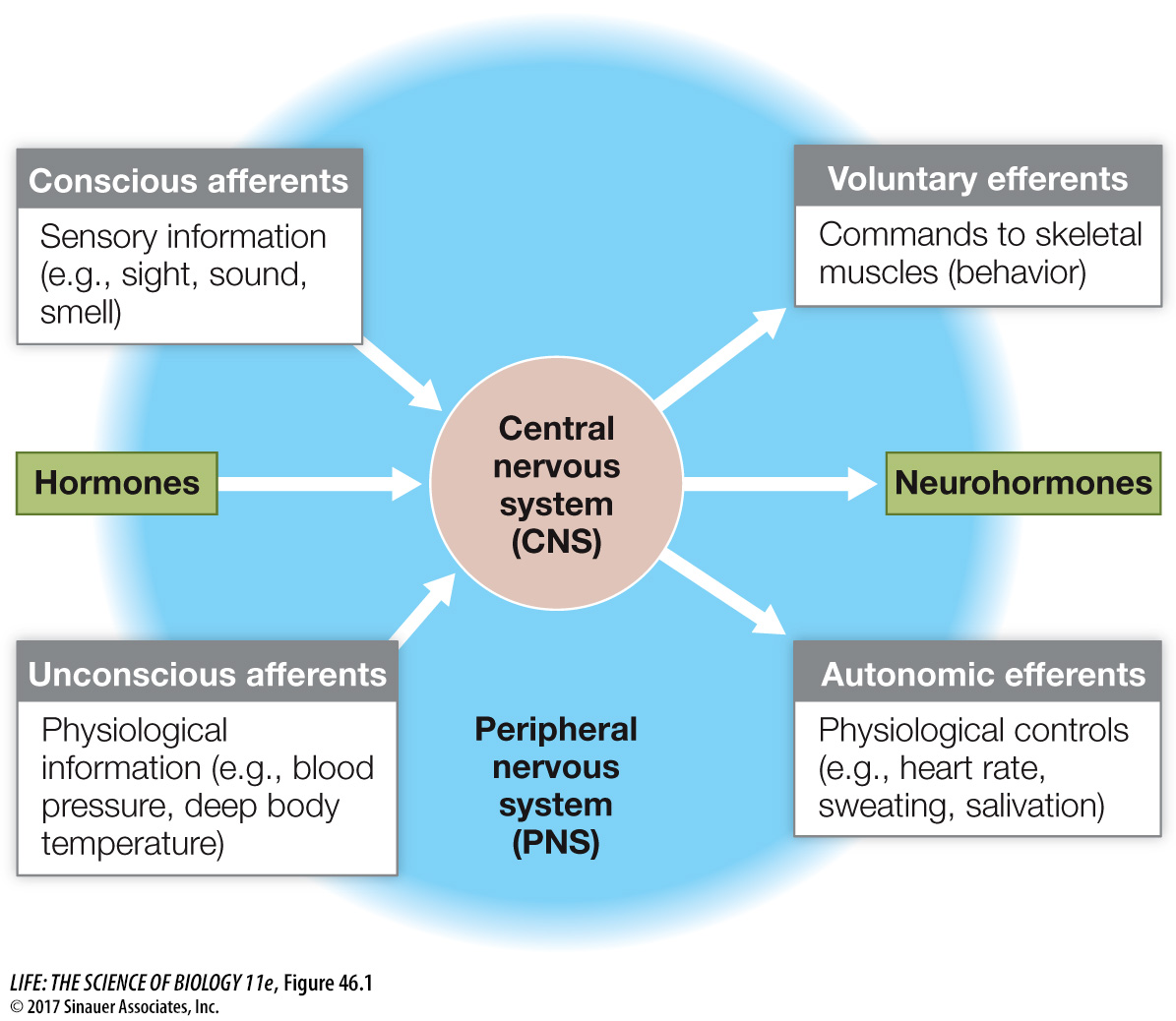Functional organization is based on flow and type of information
Figure 46.1 illustrates the major avenues of information flow through the human nervous system. The white boxes explain the four divisions of the PNS; two of these bring information from the periphery to the CNS, and two transmit information from the CNS to the periphery.

Q: How do hormonal inputs reach the CNS and hormonal outputs leave the CNS?
Hormones reach the CNS through the circulation. Neurohormones are secreted by neurons into the interstitial fluid, from which they can diffuse locally or enter the blood.
The afferent portion of the PNS (Figure 46.1, left) carries information from sensory receptor cells to the CNS. We are conscious of much of this information (e.g., light, sound, skin temperature, limb position), but we are usually unconscious of the information involved in physiological regulation (e.g., blood pressure, deep body temperature, blood oxygen levels).
The efferent portion of the PNS (Figure 46.1, right) carries information from the CNS to the muscles and glands of the body. Efferent pathways are divided into a voluntary division that executes our conscious movements; and an involuntary, or autonomic, division that controls physiological functions.
In addition to the neural information it receives from the PNS, the CNS receives chemical information from hormones circulating in the blood. In turn, neurohormones released by neurons enter the circulation and affect neurons and other cells distant from the site of release (see Key Concept 40.1).